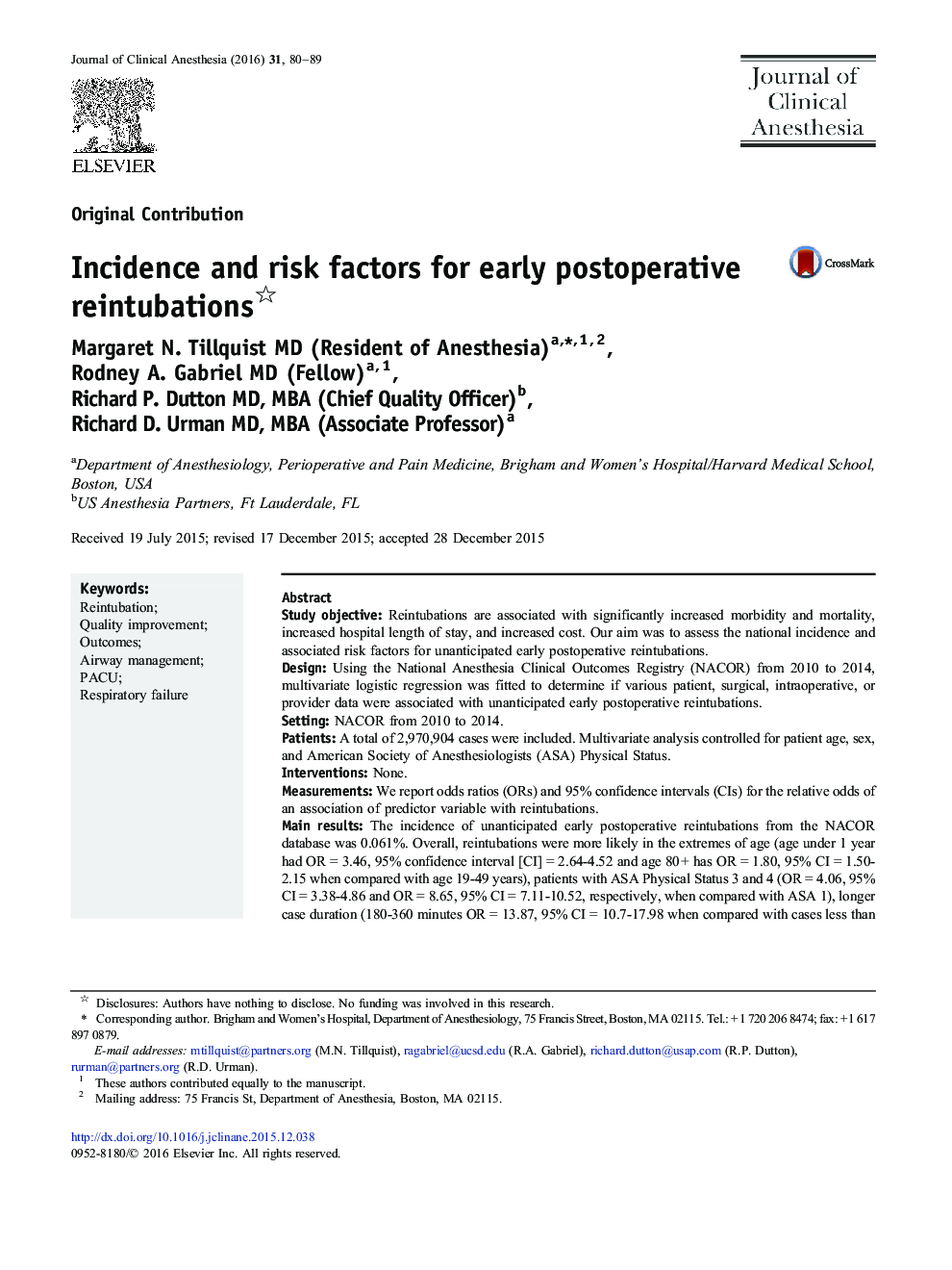| Article ID | Journal | Published Year | Pages | File Type |
|---|---|---|---|---|
| 5884654 | Journal of Clinical Anesthesia | 2016 | 10 Pages |
â¢Assessed national incidence/risk factors for unanticipated postoperative reintubation.â¢Multivariate analysis of 2,970,904 cases controlled for patient risk factors.â¢Risk factors: age extremes, higher ASA status, longer operation, and thoracic surgery.
Study objectiveReintubations are associated with significantly increased morbidity and mortality, increased hospital length of stay, and increased cost. Our aim was to assess the national incidence and associated risk factors for unanticipated early postoperative reintubations.DesignUsing the National Anesthesia Clinical Outcomes Registry (NACOR) from 2010 to 2014, multivariate logistic regression was fitted to determine if various patient, surgical, intraoperative, or provider data were associated with unanticipated early postoperative reintubations.SettingNACOR from 2010 to 2014.PatientsA total of 2,970,904 cases were included. Multivariate analysis controlled for patient age, sex, and American Society of Anesthesiologists (ASA) Physical Status.InterventionsNone.MeasurementsWe report odds ratios (ORs) and 95% confidence intervals (CIs) for the relative odds of an association of predictor variable with reintubations.Main resultsThe incidence of unanticipated early postoperative reintubations from the NACOR database was 0.061%. Overall, reintubations were more likely in the extremes of age (age under 1 year had OR = 3.46, 95% confidence interval [CI] = 2.64-4.52 and age 80Â + has OR = 1.80, 95% CI = 1.50-2.15 when compared with age 19-49 years), patients with ASA Physical Status 3 and 4 (OR = 4.06, 95% CI = 3.38-4.86 and OR = 8.65, 95% CI = 7.11-10.52, respectively, when compared with ASA 1), longer case duration (180-360 minutes OR = 13.87, 95% CI = 10.7-17.98 when compared with cases less than 60 minute duration), and cases that had a resident trainee present (OR = 1.22, 95% CI = 1.03-1.44 when compared with no resident present). Thoracic and vascular surgical procedures had the highest rates of reintubation when compared with general surgery (OR = 3.47, 95% CI = 2.81-4.28 and OR = 1.51, 95% CI = 1.24-1.82, respectively).ConclusionsA number of risk factors correlate with an increased risk of unanticipated early postoperative reintubations, including extremes of age, patients with greater medical comorbidities, longer operations, and patients undergoing thoracic procedures.
